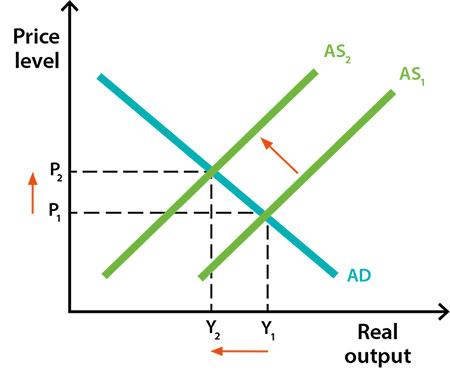Inflation surged unexpectedly in April, defying economists’ forecasts and adding fresh challenges for the Federal Reserve as it navigates a fragile economic recovery.The latest data, released Tuesday, showed consumer prices climbing at a faster pace than anticipated, intensifying concerns over rising living costs and fueling speculation about the central bank’s next move on interest rates. This surprising uptick complicates the Fed’s delicate balancing act between curbing inflation and sustaining growth, raising questions about the trajectory of the U.S. economy in the months ahead.
Inflation Surges Beyond Forecasts Signaling Economic Uncertainty
Unexpected inflation figures have rattled markets and renewed debate over the Federal Reserve’s policy path. The latest Consumer Price Index (CPI) report revealed a spike that outpaced economists’ median forecasts, primarily driven by higher energy and food costs. This surge complicates the Fed’s efforts to balance its dual mandate of promoting maximum employment while taming price increases.
Analysts now foresee greater volatility in upcoming economic data, with risks that persistent inflation could force the Fed to consider more aggressive interest rate hikes. Key factors influencing the uncertain outlook include:
- Prolonged supply chain disruptions
- Elevated demand pressures from pandemic recovery
- Geopolitical tensions pushing commodity prices upward
| Indicator | Previous | Forecast | Actual |
|---|---|---|---|
| CPI Monthly % Change | 0.3% | 0.4% | 0.7% |
| Core CPI (ex-food & energy) | 0.2% | 0.3% | 0.5% |
| Energy Prices | 1.0% | 1.2% | 1.8% |
Federal Reserve Faces Increased Pressure to Reassess Interest Rate Strategy
Recent data reveals a surprising uptick in inflation, challenging the Federal Reserve’s previously projected economic outlook. This unexpected rise has sparked widespread debate among policymakers and economists, with many urging a reassessment of the current monetary approach to avoid undermining recovery efforts. Concerns are mounting over whether the pace of interest rate hikes adequately balances curbing inflation without stifling growth.
Key factors prompting a strategic review include:
- Persistent supply chain disruptions continuing to pressure prices
- Stronger-than-anticipated consumer demand despite tightening credit
- Geopolitical tensions contributing to energy and commodity volatility
- Mixed signals from labor market data creating uncertainty around wage inflation
| Economic Indicator | Previous Forecast | Recent Data |
|---|---|---|
| Inflation Rate (CPI) | 4.2% annual | 5.1% annual |
| Unemployment Rate | 3.8% | 3.7% |
| Expected Fed Funds Rate | 2.50% | 2.75% |
Sector-Specific Price Increases Reveal Persistent Underlying Inflationary Forces
Recent data highlights that inflationary pressures are not evenly distributed across the economy but are instead driven by select sectors showing persistent price increases. Essential categories such as food, energy, housing, and transportation continue to experience above-average cost escalations, suggesting that underlying forces remain potent despite broader economic cooling. This uneven pattern complicates the Federal Reserve’s efforts to gauge the true trajectory of inflation, as headline numbers mask the stubbornness of these key areas.
Analysts note that while some service sectors have seen prices stabilize, goods related to daily living costs remain elevated, illustrating a structural rigidity in the price-setting mechanisms. The following table summarizes recent sector-specific inflation trends, shedding light on where inflation is most entrenched:
| Sector | Monthly Price Change (%) | Year-over-Year Inflation (%) |
|---|---|---|
| Food | 0.8 | 9.4 |
| Energy | 1.2 | 12.1 |
| Housing | 0.5 | 7.2 |
| Transportation | 0.7 | 8.6 |
| Healthcare | 0.2 | 4.3 |
- Food and energy prices are influenced by supply chain disruptions and geopolitical tensions.
- Housing costs remain elevated due to low inventory and rental demand outpacing supply.
- Transportation expenses reflect rising fuel costs and limited vehicle availability.
Experts Urge Balanced Policy Measures to Mitigate Economic Risks and Support Growth
Economists and financial analysts stress that the latest inflation surge demands nuanced action from policymakers.Rather than aggressive rate hikes alone, a combination of tactical monetary tightening and targeted fiscal support is essential to curb price pressures without stifling the fragile economic recovery. The risk of overstimulating the economy or triggering a sharp slowdown remains a topic of intense debate among experts, who call for vigilant monitoring of labor market data, supply chain developments, and consumer sentiment.
Key recommendations emerging from recent discussions include:
- Gradual interest rate adjustments to avoid shocks to credit markets
- Investment in infrastructure and innovation to foster long-term growth
- Enhanced fiscal measures aimed specifically at vulnerable sectors
- Flexible policy frameworks that adapt to evolving economic indicators
| Policy Element | Objective | Potential Impact |
|---|---|---|
| Interest Rate Moderation | Control inflation | Reduced market volatility |
| Targeted Fiscal Support | Support growth | Protect employment |
| Infrastructure Spending | Boost productivity | Long-term competitiveness |
Insights and Conclusions
As inflation rises unexpectedly, the Federal Reserve faces an increasingly complex economic landscape. Policymakers must now weigh the risks of tightening monetary policy too quickly against the potential consequences of allowing inflation to persist. The evolving situation underscores the challenges ahead for the Fed as it seeks to balance price stability with sustainable growth. Readers can expect continued scrutiny of inflation data and Fed actions in the coming months, as the central bank navigates these uncertain waters.




